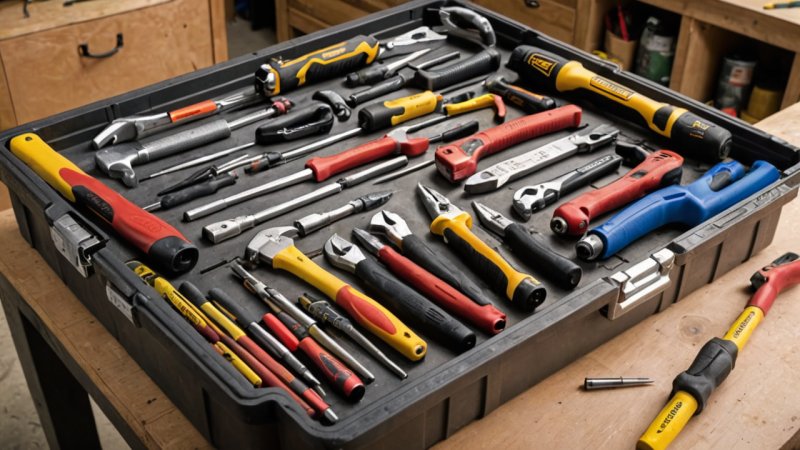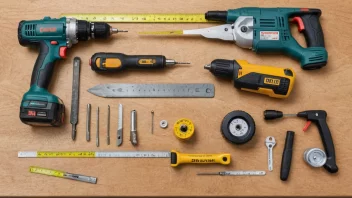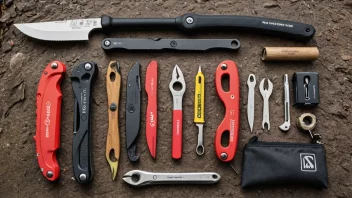Hand tools are the backbone of every DIY enthusiast's workshop, providing the means to create, repair, and innovate. However, just like any other equipment, these tools require regular maintenance to ensure their longevity and efficiency. Neglecting your hand tools can lead to diminished performance, increased wear and tear, and even safety hazards. In this comprehensive guide, we will explore essential maintenance tips that every man should know to keep his hand tools in peak condition.
Understanding the Importance of Tool Maintenance
Before diving into specific maintenance tips, it’s crucial to understand why maintaining your hand tools is essential. Regular maintenance not only extends the life of your tools but also enhances their performance, ensuring that you achieve the best results in your projects. Moreover, well-maintained tools are safer to use, reducing the risk of accidents caused by malfunctioning equipment.
Basic Maintenance Practices
1. Cleaning Your Tools
One of the simplest yet most effective ways to maintain your hand tools is to keep them clean. Dirt, dust, and grime can accumulate on the surfaces of your tools, leading to rust and decreased functionality. Here are some steps to follow:
- Use a Soft Brush: A soft-bristled brush can effectively remove dirt and sawdust from your tools. Pay special attention to crevices and joints.
- Wipe with a Cloth: After brushing, use a clean cloth to wipe down the surfaces of your tools. For stubborn residues, a mild solvent can be helpful.
- Dry Thoroughly: Always ensure that your tools are completely dry before storing them to prevent rust formation.
2. Lubrication
Lubrication is essential for tools with moving parts, such as pliers, saws, and shears. Proper lubrication reduces friction and wear, prolonging the tool's life. Here’s how to lubricate your tools:
- Select the Right Lubricant: Use a light machine oil or a silicone-based lubricant for most tools. Avoid heavy oils that can attract dirt.
- Apply Sparingly: A little goes a long way. Apply a few drops of lubricant to the moving parts and wipe off any excess.
- Check Regularly: Make it a habit to check and reapply lubricant as needed, especially after heavy use.
3. Sharpening Edges
Keeping cutting tools sharp is crucial for performance and safety. Dull blades require more force to cut, increasing the risk of slips and accidents. Here’s how to sharpen your tools:
- Use a Sharpening Stone: For chisels and knives, a whetstone or sharpening stone is ideal. Maintain a consistent angle while sharpening.
- Employ a File: For tools like saw blades, use a file to sharpen the teeth. Ensure you follow the tooth profile for effective sharpening.
- Test for Sharpness: After sharpening, test the edge on a piece of scrap material. It should cut cleanly without excessive force.
Tool-Specific Maintenance Tips
1. Hammers
Hammers are often overlooked in maintenance routines. However, they require attention too:
- Inspect the Handle: Regularly check for cracks or splinters in the handle. Replace it if necessary.
- Clean the Head: Remove any debris from the hammerhead and polish it if rust begins to form.
2. Screwdrivers
Screwdrivers can lose their effectiveness if not maintained properly:
- Check for Wear: Inspect the tips for wear and replace any that are damaged.
- Keep Handles Clean: Wipe the handles with a damp cloth to prevent grease buildup.
3. Plier and Wrench Maintenance
For pliers and wrenches, focus on the joints and grips:
- Lubricate the Joints: Apply lubricant to the pivot points to ensure smooth operation.
- Clean the Grips: Use a mild detergent to clean the grips and remove any sticky residues.
Storage Solutions for Longevity
How you store your hand tools can greatly affect their longevity. Here are some effective storage tips:
- Use Toolboxes: Invest in a sturdy toolbox or tool chest to keep your tools organized and protected from moisture.
- Hang Tools: Wall-mounted pegboards or magnetic strips help keep tools visible and accessible while preventing damage.
- Avoid Damp Areas: Store tools in a dry, cool place to avoid rust and degradation.
Safety Considerations
Maintaining your tools is not just about efficiency; it’s also about safety. Here are some safety tips to keep in mind:
- Handle with Care: Always use tools according to their intended purpose to prevent accidents.
- Wear Protective Gear: When using tools, wear appropriate protective gear such as gloves and safety goggles.
- Be Mindful of the Environment: Ensure your workspace is clean and free of clutter to avoid slips and falls.
Conclusion
Maintaining hand tools may seem like a tedious task, but it is essential for ensuring their longevity and efficiency. By following the essential maintenance tips outlined in this guide—cleaning, lubrication, sharpening, and proper storage—you can keep your tools in optimal condition. Remember, a well-maintained tool is not only a joy to use but also enhances your safety and productivity. So take the time to care for your hand tools, and they will serve you well in all your DIY endeavors.






